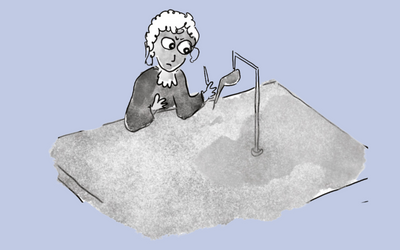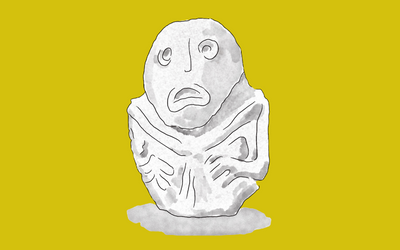The story of us

This is a story of you and by you.

It starts with this gentleman called Mr Sahelonthropus Pchadensis. He lived in the Chad region of Africa almost 7 million years ago. Among the twitter of birds and the chatter of his friends.
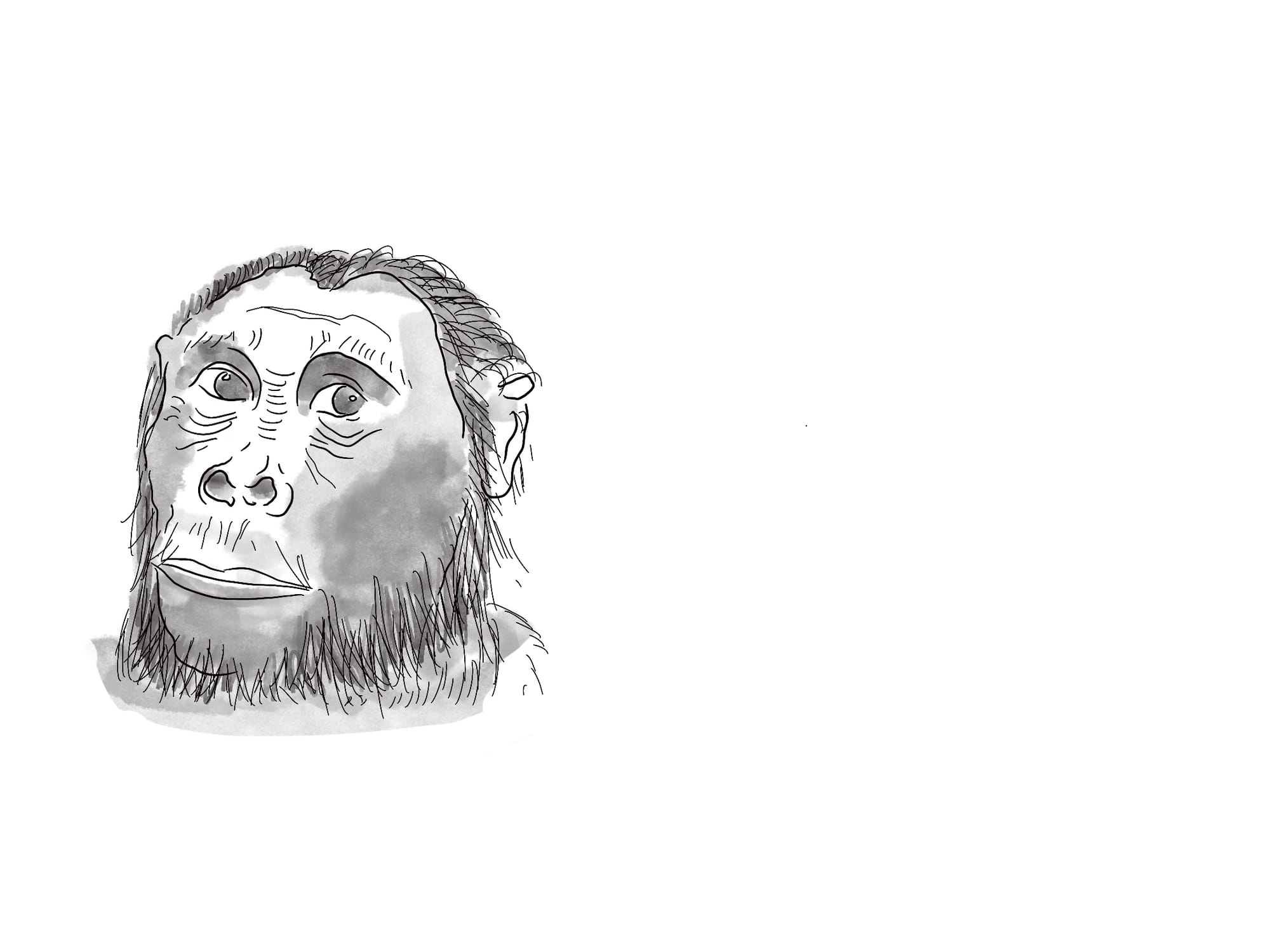
This is Lucy, believed to be a descendant of Mr Pchadensis coming in 3 million later. She lived and died in the Afar region of Ethiopia, and thus her tribe is called "Australopithecus Afarensis." From her fossil, some feel she died by falling off a tree. It is not surprising though since she and her tribe still spent a lot of time swinging from tree to (missed!) tree.
But, this may have been one of the first species to spend at least some of their time on two feet. This was an important moment in our evolution. It meant our range of vision improved since we were now walking taller, and it freed up two arms.

About three million years ago, the next version of us evolved. Homo Habilis, or the "Handy Man."

Handy Man figured out what to do with his two spare hands. Shaping rocks. Sure the rocks could not bring down a wooly mammoth, but it could break the bones of a dead one. From where he could suck in protein rich marrow.
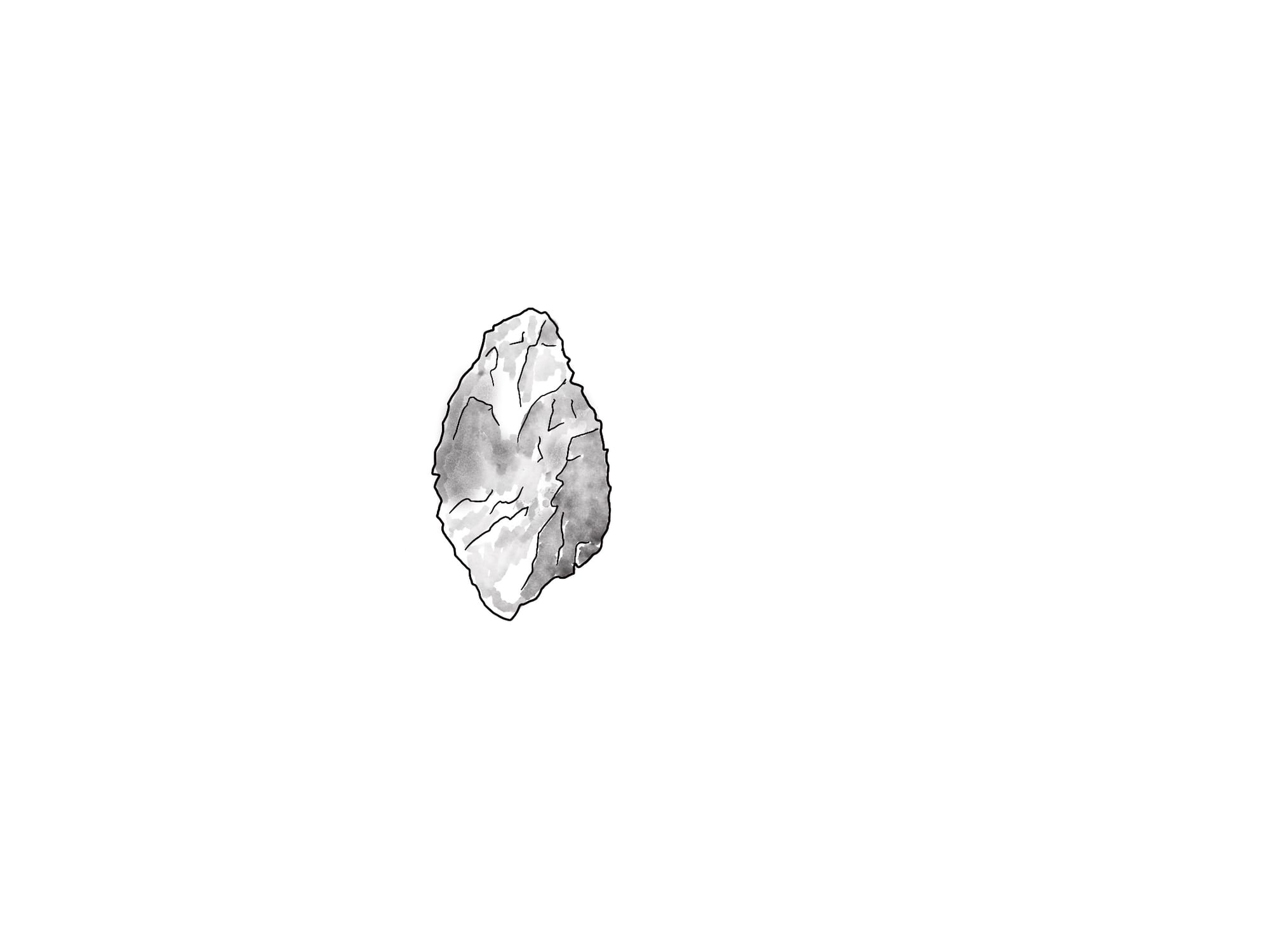
Lest you deride the stone tool, remember that this has been the tool of choice for 99.7 percent of the time that we walked on this planet.

Stones also helped fight off scavengers and slowly the diet changed into one that included a lot of meat. Along with that the size of the brain started growing too.
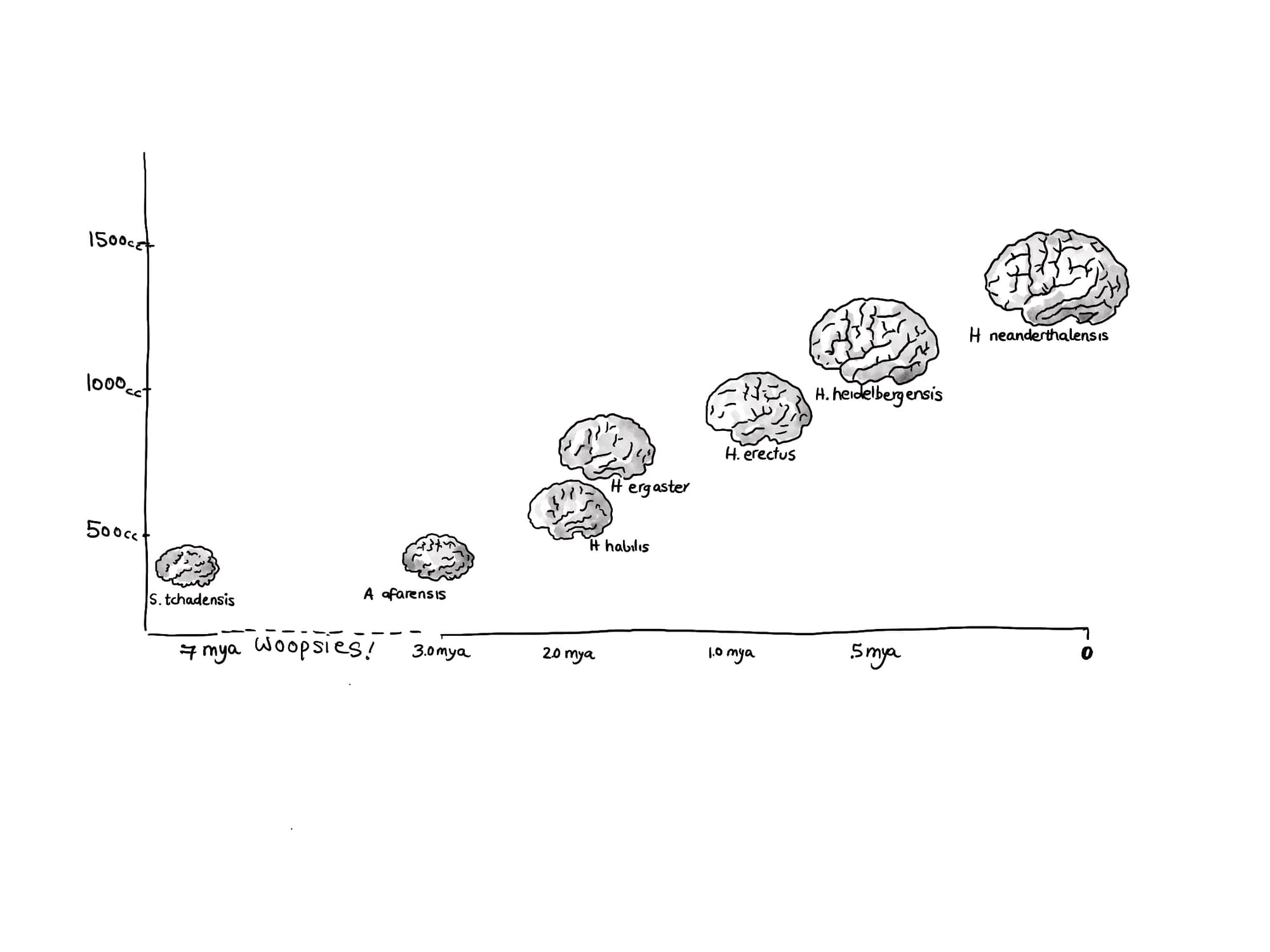
So far we have learnt the names of three of our ancestors. It's fun to say their names out aloud (Captain Haddock often did it). A good way to remember is to know how they were named. Tchandensis was named after the region where the fossil was found - Chad, Africa. Afarensis...Afar, Africa. Homo Habilis was named a bit differently. Habilis means "skilful" in Latin, which is exactly what Homo Habilis was - using the stone to good use for a few million years. And just surviving. So we could happen.
Homo Habilis lived around the Olduvai gorge in Tanzania. We know this from the thousands of stone tools that have been found there.

A gorge is a narrow valley with steep mountains on either side. One of the unique things about this gorge is that the various layers of rock remain exposed so it is relatively easier to date fossils when they are found. Stratigraphy is the study of analysing the strata in a mountain face to establish general timelines of how Earth evolved.
But wait a minute. You know how old you are because you have a birth certificate. But what about rocks - they don't have one? So how do we know how old is a rock?
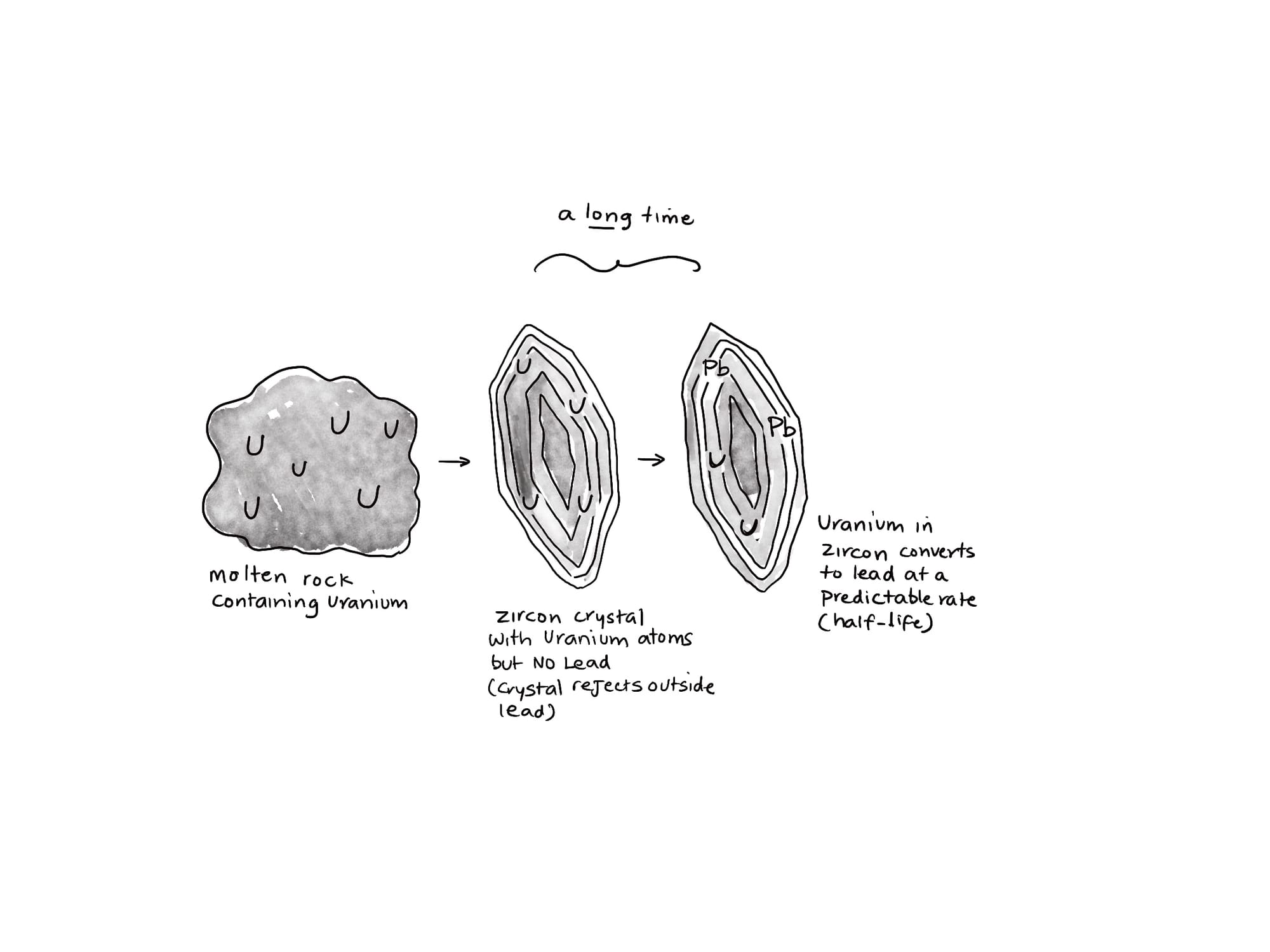
(U= Uranium, Pb=Lead)
Zircon is a crystal found in rocks formed due to the cooling of hot magma deep inside, or at the surface of the Earth. It contains three types of atoms - Zirconium, Silicon and Oxygen. But every so often the crystals will take in Uranium atoms into the crystalline structure.
Such "impure" crystals become clocks. The Uranium atoms inside are locked in, and over time, they decay into Lead (Pb) atoms. The half-life of Uranium is 4.5 billion years. This means that in 4.5 billion years exactly half of the Uranium atoms will be left. The other half would have converted into Lead.
So when scientists analyze a piece of Zircon crystal extracted from a rock, they can know from the ratio of Uranium atoms to Lead atoms how old the crystal, and therefore the rock is. For example, if the ratio is half, then the rock is 4.5 billion years old, as old as Earth itself! If it is one-fourth, the age of the rock is 2.25 billion years, and so on.
Isn't it amazing how nature throws in some clues, almost casually, for us to find out? It's almost as if there is someone out there who wants us to find out about our past.
About 2 million years ago the Homo species started migrating out of Africa; quite likely as they chased animals into newer territories. Remember, this was a time when you could literally walk from Africa to Europe as the continents were still connected. Which is what Homo Erectus might have done.
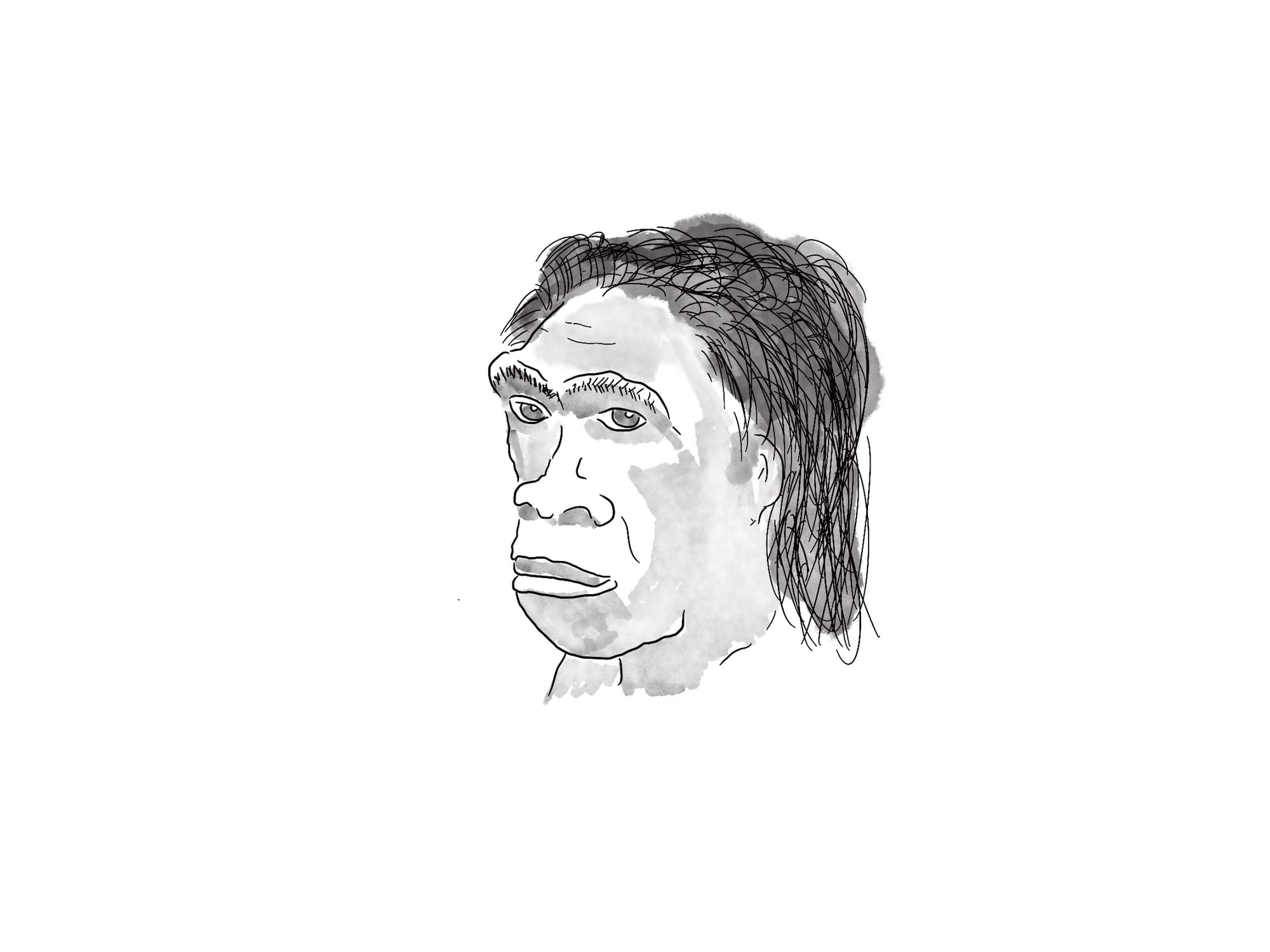
(Adapted from: https://commons.wikimedia.org/wiki/File:Homo.erectus.adult.female.smithsonian.timevanson.flickr.jpg)
The first remains of Homo Erectus were found far away from Africa - all the way in Indonesia. Note the sloping forehead and the less protruding teeth. Dentists were already heaving a sigh of relief.
By now, Homo Erectus was quite a master at using stone tools, having had more than a million years of practice. The stones became sharper and are now regularly used as a hand axe. Fire came next. Fire meant meat could now be cooked, making it easier to digest. This meant a more rapid intake of proteins, and you guessed it - bigger brains again.

(royalsocietypublishing.org)
While it's unlikely that this species knew how to make fire, there is evidence that if they found fire somewhere, they knew how to keep it going for as long as they could.

Homo Erectus (also called "The Upright Man" for those who might uncomfortable with the technical term) was the rock star among all the human species that came before or after him. If success can be defined in terms of survivability, this tribe of humans survived over 1.5 million years. Yes - that is an astonishing 1,500,000 years! By contrast, we Homo Sapiens have been around for only 300,000 years, and at the rate at which we're de-stabilising nature, it would be a miracle if we survived even half as long as the Homo Erectus.
(https://commons.wikimedia.org/wiki/File:Human_evolution_timeline.svg)
This was the first of the Homo species to migrate "Out of Africa." But why did they do that? Well, one theory (there are several) is climate change (Earth started to go cool down) that expanded their homeland - the wide-open savannah landscape. The Savannahs may have expanded all the way to Southern Levant (which is in modern-day Israel), and so that's what they followed. Because guess what else lives in the Savannah? Food.
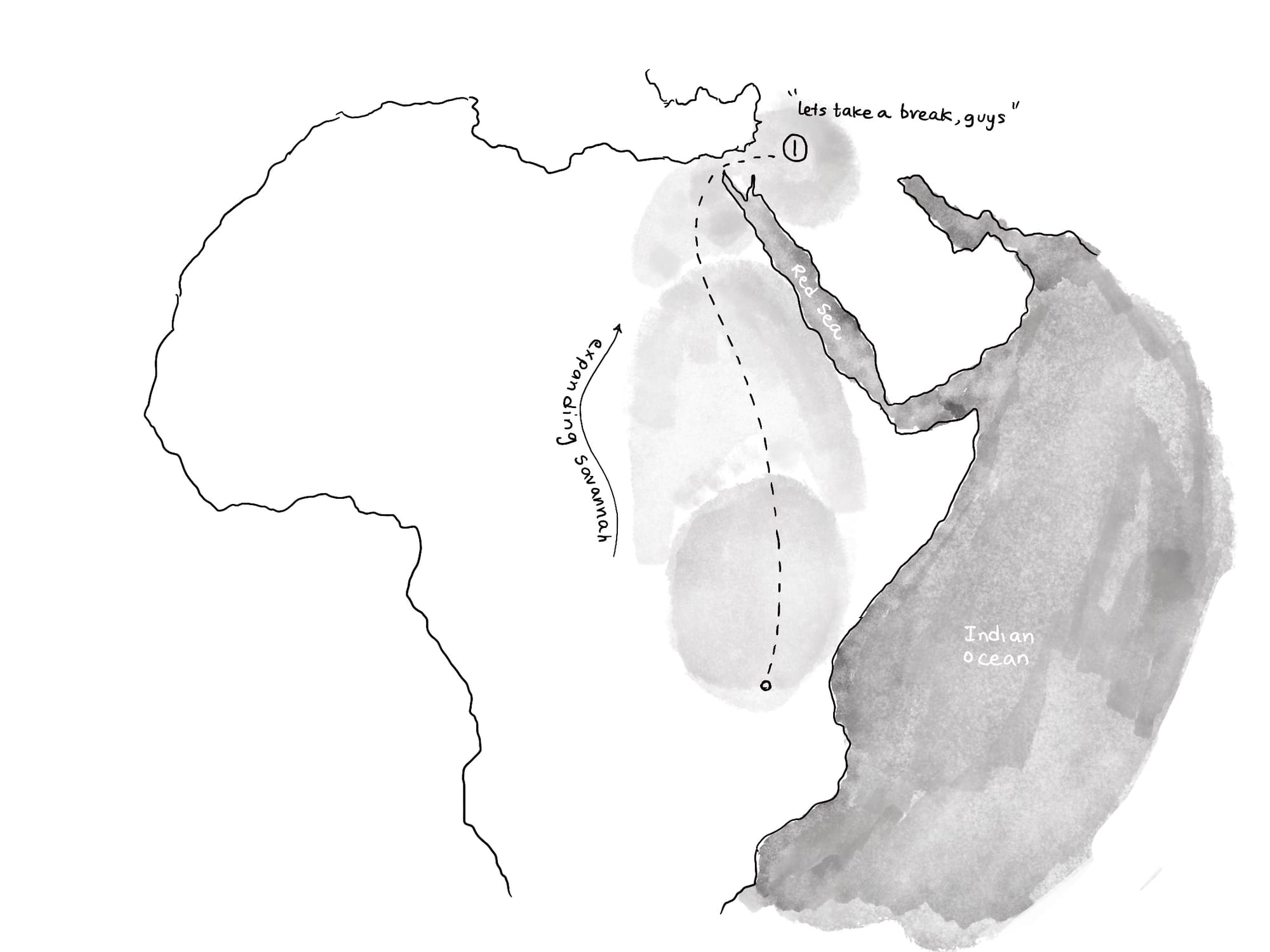
Eventually, fossils from Homo Erectus were found all over the place. The age of the global traveller had arrived (it took a couple of million years, so what?).

We get our human proportions from the Homo Erectus - shorter hands and longer legs. And our inclination to stay on land instead of trees.
The last of the Homo Erectus was likely wiped off the face of Earth around 100,000 years ago. However, just around their time was coming to an end, there were four other Homo species walking on Earth.
- Homo Heidelbergensis
- Homo Floresiensis
- Homo Neanderthalensis
- Homo Sapiens

Homo floresiensis (nicknamed ‘Hobbit’ because they were short!) lived about 100,000 years ago, and their fossils have only been found on the island of Flores, Indonesia. Standing at less than 4 feet tall, one of the reasons for their dwarfism could be that they were stuck on the island forever. They hunted elephants...but the elephants were dwarf elephants too!
Homo heidelbergensis may have been the first of the Homo species to survive in cold climates, as its fossils have been found in Europe and northern parts of China. This species broke new ground - built shelters of rock and wood.
Homo neanderthalensis was another species that existed in Europe. The first fossil discovery was made in a valley in Germany, and in German, a valley is called "thal" - hence the name. This species had big brains, even bigger brains than ours. They controlled fire, lived in shelters, wore clothing and updated their WhatsApp status daily. There is some evidence they may have buried their dead and even offered flowers to the departed. It is believed that a small portion of Europeans living today have the same DNA as the Neanderthals.
What an exciting time it must have been back then - to have many different types of humans, not just the one type we have today!
But about 30,000 years ago, all except one went extinct.
https://www.flickr.com/photos/timevanson/7283199410
https://www.worldhistory.org/image/6442/homo-heidelbergensis-reconstruction/
https://commons.wikimedia.org/wiki/File:Homo_sapiens_neanderthalensis-Mr._N.jpg
All that remained was us, Homo Sapiens, which is Latin for "Wise Man." It might seem a bit pompous at first, but if you think a bit closer it's not too far from the truth.
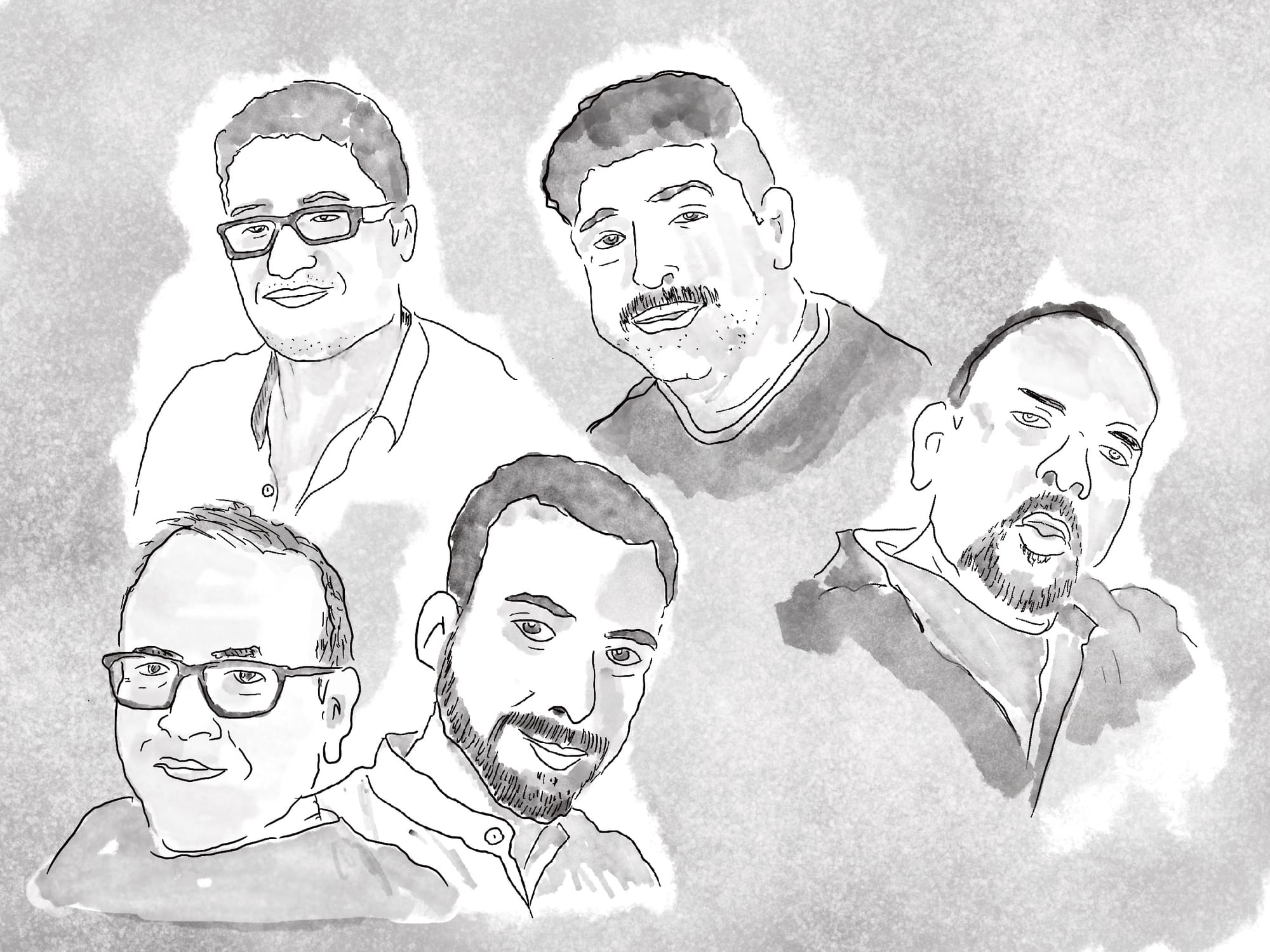
You are a product of a 7 million-year evolution. At least as far as nature is concerned, you are the finest version of "human" she has created.
References
The following pages were helpful while researching this topic.

